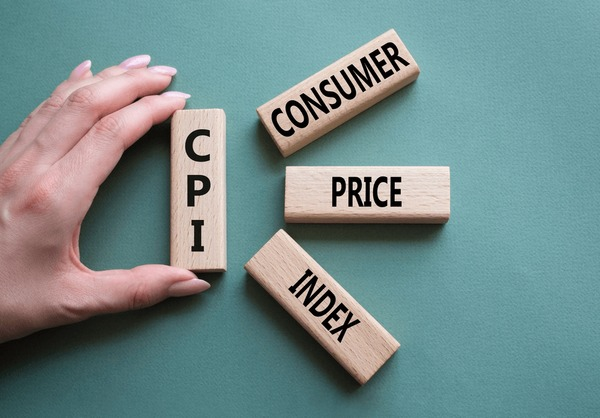Consumer Price Index Drops to Lowest Level Since 2021

The consumer price index (CPI) plays a crucial role in understanding inflation trends in the economy. As of April, CPI inflation dropped to 2.3%, the lowest level since February 2021, influenced by falling prices in essential categories like gasoline, groceries, and clothing. This marked a significant decrease from previous months, highlighting a shift in inflation rates that many economists are closely monitoring. However, looming economic pressures—including US tariffs—are expected to trigger a resurgence in inflation in the near future, prompting an inflation forecast that warrants strategic consumer awareness. As we delve deeper into the April inflation report, it becomes clear that while the CPI currently reflects a period of deflation, challenges ahead could transform these dynamics rapidly.
The consumer price index (CPI), often referenced as a vital measure of price changes, serves as an essential indicator of economic health. In recent discussions surrounding inflation metrics, terms like ‘pricing index’ and ‘cost of living adjustments’ frequently emerge, reflecting the broader implications of market shifts. Notably, the fluctuations in inflation rates inform both consumers and policymakers about potential price increases driven by various factors, including trade tariffs and global economic conditions. Understanding these terms aids in comprehending how everyday expenses may be impacted by external pressures, making it pertinent for consumers to stay informed about current trends in pricing forecasts. Through this lens, deciphering the recent April inflation report sheds light on a complex economic landscape shaped by consumer behavior and regulatory changes.
Understanding the Consumer Price Index and its Impact on Inflation
The Consumer Price Index (CPI) serves as a vital indicator of inflation, tracking the average change over time in the prices paid by consumers for a basket of goods and services. In April, the CPI registered a modest increase of 2.3% compared to the same month last year, marking a significant drop from previous highs observed during the pandemic. This decline can be attributed to reduced prices in essential consumer categories such as gasoline, clothing, and groceries, showcasing that while inflation continues to be a concern, recent trends suggest a potential easing in pressure on household budgets.
Economists analyze CPI data to gain a clearer understanding of overall economic health and living costs. A lower CPI not only signifies that inflation is under control, but it may also influence monetary policy decisions made by the Federal Reserve. As the April report suggested a positive trend in CPI data, experts are cautious. Rising tariffs and other external economic factors could readily alter inflation trajectories, reminding us that while the present may reflect stability, the future remains uncertain.
The Link Between CPI Inflation and Tariffs
Tariffs imposed on imports can significantly impact the Consumer Price Index (CPI), introducing complexities to inflation rates. When tariffs are enacted, companies that rely on imported materials often face increased costs, which they may pass on to consumers. Economic forecasts indicate that the average tariff rate could add approximately one percentage point to the CPI within a six to nine-month period. This is an essential consideration as we examine the inflation forecast amidst ongoing trade policy changes.
The implications of tariffs on CPI inflation are underscored by findings from various economists. With the current tariff policies, the average American household may see an additional burden of around $2,800 if prices rise due to imported goods becoming pricier. This situation creates a dual challenge: while CPI inflation has recently shown a decline, the impending tariff effects threaten to destabilize this positive trend and reinforce inflationary pressures in the near future.
Analyzing the April Inflation Report
The April inflation report released by the Bureau of Labor Statistics marked a pivotal moment in the discussion of CPI trends, revealing a 2.3% increase compared to April of last year. This figure not only reflects the lowest annual growth since February 2021 but also outlines a broader narrative of declining costs in essential goods, including groceries and gasoline. Observations from the report suggest that while consumer prices have declined, various market forces could challenge this stability.
In particular, the April report reflects several price drops, including a substantial decrease in gasoline prices by about 0.1%, showcasing a broader trend of deflation in oil-related sectors. However, this favorable development is juxtaposed with potential threats of rising inflation due to tariffs. Since many economists link these tariff implications directly to consumer prices, the anticipation for the next inflation report is high, with a focus on whether tariff-induced pricing changes materialize.
Inflation Rates and Consumer Essentials
Trading dynamics in the current economy reveal that inflation rates related to essential goods, such as food and gasoline, are pivotal in determining overall economic sentiment. The CPI data indicates a downturn in the prices of key consumer essentials, including a noteworthy reduction in grocery prices by 0.4% in April. This decline in essential costs can provide relief to families feeling the financal pressures of inflation, making everyday purchases more manageable.
Despite the recent dips in essential goods prices, there remains an underlying concern regarding future inflation rates. Economists project that a combination of increasing tariffs and fluctuating demand may contribute to renewed inflation pressures. The tension exists between the positive short-term outcomes signalled by lower prices and the potential long-term impact that elevated costs could have on consumer purchasing power and household economies.
The Role of Economic Policies in Inflation Dynamics
Economic policies, notably those surrounding trade tariffs, play a crucial role in shaping inflation dynamics. The interconnectedness of international trade and domestic pricing means that policy changes can provoke immediate and significant shifts in consumer costs. With President Trump’s tariffs still fresh in the minds of economists and consumers alike, the expectation is that any resurgence in tariffs could lead to higher inflation rates—a critical focus as we navigate the current economic landscape.
Moreover, the uncertainty arising from fluctuating trade agreements could influence both supply chain reliability and market prices. With tariffs historically linked to price increases in imported goods, the expectation is that any deviation from stable trade practices will be felt in the CPI reports. Continuous monitoring of economic policy impacts will remain essential for consumers and policymakers aiming to sustain economic growth amidst ongoing price pressures.
Predictions for Future Inflation Trends
With fluctuating inflation rates and the looming shadow of tariffs, economists are tasked with forecasting future trends in CPI. Recent analyses suggest that while current inflation may appear manageable, underlying pressures—particularly from tariffs—will potentially lead to a spike in inflation rates. Experts predict that inflation could escalate as inventory levels drop and businesses begin passing on their higher costs to consumers.
In this context, projections for inflation rates are varied but concerning, with some predicting that core CPI inflation could reach as high as 3.5% by the end of 2025. This anticipated rise aligns with the economic forecast where consumers must remain vigilant about market changes that could affect their purchasing power. Understanding these trends is crucial for adapting personal financial strategies in response to an unpredictable economic environment.
Consumer Behavior Amidst Changing Inflation Dynamics
As inflation rates fluctuate, consumer behavior adapts in response to economic conditions. The shift in prices, particularly in essential goods, often leads to changes in purchasing habits. With the April inflation report showcasing declining prices in areas such as groceries and clothing, many households may feel inclined to take advantage of these favorable trends before potential inflationary pressures re-emerge.
Consumers may also change their spending patterns based on anticipated future costs, which can exacerbate inflation when demand increases in specific sectors. Understanding how consumers react to price changes can provide valuable insights into broader economic conditions and help businesses better prepare for shifting market dynamics caused by tariffs and inflationary forecasts.
Impacts of Tariffs on Domestic Industries
The introduction of tariffs has far-reaching implications for domestic industries and the overall economy. While designed to protect local businesses from foreign competition, tariffs can inadvertently lead to increased costs for consumers as companies adjust to heightened expenses. This cycle impacts various sectors, from technology to agriculture, creating a complex web of economic consequences tied directly to the Consumer Price Index.
Companies faced with increased tariffs may either absorb the costs, impacting their margins, or choose to pass on higher prices to consumers, thereby contributing to inflation. The downstream effect of such decisions can ripple throughout the economy, resulting in varied inflation outcomes based on industry responses. As a result, monitoring these tariff impacts on domestic industries becomes essential for understanding shifting inflation rates.
Navigating Economic Uncertainty: A Look Ahead
As the economy continues to grapple with the dual challenges of inflation and tariff volatility, stakeholders from consumers to policymakers must anticipate economic trends and plan accordingly. The uncertainty surrounding inflation forecasts suggests that while recent reports may show cooling inflation, underlying pressures could quickly alter that landscape. This necessitates cautious optimism from consumers and strategic foresight in economic policy.
Future inflation management strategies will require a holistic understanding of external economic factors—especially tariffs, global supply chain issues, and consumer behavior. As we look to the future, remaining informed and adaptable will be crucial for navigating the potential for rising consumer costs and ensuring economic stability.
Frequently Asked Questions
What does the consumer price index mean for CPI inflation rates?
The consumer price index (CPI) is a critical indicator of CPI inflation rates, measuring changes in the price level of a basket of consumer goods and services over time. A lower CPI inflation rate, such as the 2.3% recorded in April, indicates a slowdown in inflation, reflecting lower costs for essentials like groceries and gasoline.
How do US tariffs impact the consumer price index?
US tariffs can significantly impact the consumer price index by increasing the costs of imported goods. When businesses face higher import costs due to tariffs, they may pass these costs onto consumers, leading to higher prices reflected in the CPI. Economists expect that the current tariff policies may add as much as 1 percentage point to the consumer price index over time.
What was highlighted in the April inflation report regarding consumer price index trends?
The April inflation report showed that the consumer price index increased by 2.3% year-over-year, the lowest since February 2021. This report highlighted decreases in prices for gasoline, groceries, and clothing, suggesting a temporary containment of inflation levels, despite concerns that future tariffs may reignite inflation.
What are the predictions for future CPI inflation rates amid current economic conditions?
Predictions for future CPI inflation rates indicate that while inflation has declined recently, the imposition of tariffs could lead to rising inflation. Economists expect core CPI inflation to rise, potentially reaching 3.5% by the end of 2025 due to both tariff impacts and persistent price pressures in housing and services.
How might the consumer price index change in response to tariff implementations?
The consumer price index may rise in response to tariff implementations as businesses adjust to increased costs of imported goods. A 10% average tariff could hypothetically add up to 1 percentage point to the CPI within six to nine months. Thus, consumers may experience price increases in various goods as scientists forecast the effects of tariffs on inflation.
What role do economists play in interpreting the consumer price index data?
Economists analyze consumer price index data to identify trends in inflation and its drivers. They provide forecasts and insights on how external factors like tariffs influence CPI inflation rates, helping consumers and policymakers understand the economic landscape. Their expertise is crucial in interpreting fluctuations in the CPI and anticipating future inflationary pressures.
Why is understanding the consumer price index important for consumers?
Understanding the consumer price index is essential for consumers because it reflects the cost of living and purchasing power. Changes in the CPI directly impact daily expenses on essential goods and services, allowing consumers to better plan their budgets and financial decisions in an environment affected by CPI inflation and economic policies.
| Key Point | Details |
|---|---|
| Consumer Price Index (CPI) | The CPI fell to 2.3% in April, the lowest since February 2021, down from 2.4% in March. |
| Inflation Drivers | Lower prices for essentials like groceries and gasoline, alongside declines in used cars and clothing, supported the decrease. |
| Expectations of Future Inflation | Economists predict that tariffs imposed will reignite inflation, particularly seen in the May CPI report. |
| Impact of Tariffs | Tariffs could add about 1 percentage point to the CPI within 6-9 months, with costs potentially rising for the average household. |
| Current Tariff Rates | The average tariff rate is 10%, with higher rates for imports from China and specific goods. |
| Observations on Goods Inflation | Despite higher costs, the overall impact on CPI was modest, with a small 0.1% increase in goods prices. |
| Housing and Services Inflation | Housing inflation remains elevated at 4%, whereas inflation for services has gradually declined. |
Summary
The consumer price index has shown a notable decrease, falling to 2.3% in April, a significant shift that highlights current trends and challenges within the economy. While this lower CPI indicates a potential easing of inflation pressures, experts caution about the looming effects of tariffs which may lead to renewed inflationary pressures. As we observe the interplay of tariffs, essential goods prices, and economic policies, it is crucial to stay informed about how these factors may shape future CPI readings.



